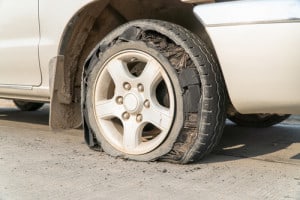
How Design Defects Can Spark a Defective Tire Claim
Designing a safe, effective tire can be a complicated endeavor. Everything from tread pattern and groove ratio to the shape and layout of a tire can impact performance and durability. While consumers tend to trust that tire manufacturers are focused on designing safe tires and testing the safety of their designs, all too often, the drive to promote profits over safety leads to unsafe, poorly designed tires hitting the roads.
When tires with design flaws contribute crashes, negligent manufacturers can be held accountable for the harm their dangerous tires have caused.
At the Amaro Law Firm, our attorneys are experienced at representing those who have been harmed by unsafe automotive equipment, like defective tires. Effective at protecting our clients’ rights in any legal setting, our lawyers can help you seek justice if you or a loved one has been hurt by any type of tire defect or failure.
Hurt by a Defective or Faulty Tire?
Call (713) 352-7975, Text (281) 612-8024 or Email Our Firm
for Your FREE Consultation
During your FREE, no obligations consultation, we will review your potential claim, answer your questions and explain your options for moving forward. We offer free virtual and mobile consultations to those who are unable to visit our offices.
Background on Modern Tire Design
While steel-belted pneumatic tires were widely used on passenger vehicles from the 1940s through the late 1960s, these tires were discovered to be prone to belt edge separation, presenting major durability and safety issues. Belt edge separation occurs when the belt, a strip of material inside the tire that reinforces the tread, separates from the edge of the tire due to centrifugal force, causing tire failure.
Consequently, many tire makers began developing steel-belted radial tires in order to reduce the risk of belt edge separations. These radial tires are typically comprised of several components, like (but not limited to):
- An inner liner
- Steel belts
- Bead reinforcing strips
- Polyester body plies
- Sidewall rubber
- Tread.
Generally, the belt edge is the region of the tire that experiences the most stress.
5 Design Defects That Can Spark a Defective Tire Claim
- Belt wedge design flaws – A belt wedge is a rubber component between the two steel belts of a tire. Intended to improve tire durability, the belt wedge is used to prevent tire belts from rubbing against each other, which could cause belt detachment. While some tire manufacturers have successfully used belt wedges, others have designed faulty wedges that are unable to sufficiently decrease the strain, stress and heat that impacts the edge of the belt. These flaws can cause belt separation and premature tire failure.
- Cap ply defects – Also intended to enhance the durability of the belt edge, a cap ply is a component between the tread and the top of the belt. Many tire manufacturers argue that this design feature is only necessary for high speed or high performance tires and have, therefore, omitted this component from their tires. The absence of this safety feature, however, can be a design flaw that increases the risk of belt separation.
- Skim stock flaws – The skim stock is a rubber structural compound that encapsulates a tire’s steel wires or fabric reinforcement. Different tire makers have their own proprietary skim stock formulas. When a specific line of tires is associated with high rates of tread separation, a skim stock defect (like inadequate rubber compounding) may be to blame.
- Rubber-related flaws – To bind the rubber components of a tire, tires are “cured” or “vulcanized.” This process occurs at a specific temperature for a specific period of time. When tires are cured for insufficient or excessive periods of time (or at temperatures that are too high or low), the rubber components will not properly bind, resulting in less durable tires that are more likely to fail prematurely.
- Inner liner design defects – The inner liner is a built-in inner tube that prevents a tire’s compressed air from escaping while preventing moisture from entering the tire. For most modern tires, the primary component of the inner liner is Halobutyl, a synthetic rubber copolymer. The more Halobutyl included in the inner liner, the more effective the tire will usually be at retaining air while keeping moisture out of the tire. The expense of Halobutyl, however, can lead manufacturers to minimize this component, which can degrade the durability of tires and increase the risk of tire failure.
An attorney at the Amaro Law Firm can help you determine if these or other tire design defects may have contributed to your accident and injuries.
Find Out More about Your Potential Claim: Contact a Houston Personal Injury Attorney at the Amaro Law Firm
If you or a loved one has been harmed by a defective tire (or any dangerous product), a Houston personal injury attorney at the Amaro Law Firm is ready to explain your legal options and provide you with aggressive, effective representation moving forward.
Call (713) 352-7975, text (281) 612-8024 or email our firm for your FREE consultation and the answers that can make all the difference in the strength and success of your potential claim.
The Amaro Law Firm’s history of excellence and success in tire defect (and other personal injury) claims has earned us glowing testimonials from former clients and 5-star ratings on Google and Facebook.
